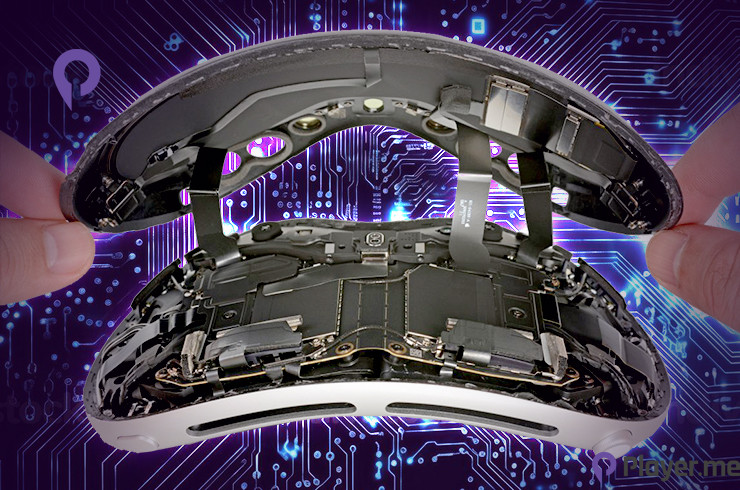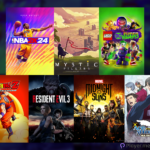The recent teardown of Apple’s Vision Pro by iFixit offers a rare glimpse into the inner workings of this AR/VR headset, revealing insights into its design, components, and potential challenges for future repairs.
iFixit’s Expertise at Work

The teardown process, while reminiscent of other Apple devices, required the skilled use of tools from iFixit like a heat gun, numerous screws, and a touch of elbow grease.
The EyeSight Feature: A Creepy Marvel
One standout feature of the Vision Pro is its EyeSight display, allowing the device to project a 3D version of the wearer’s eyes. iFixit delves into the intricacies of this feature, highlighting the numerous points of failure that make it both fascinating and challenging from a repair perspective.
The teardown video provides a closer look at the technology behind EyeSight, uncovering the design choices and potential difficulties associated with this unique feature. This led to the EyeSight display receiving mixed reviews for its dimness and low resolution, despite the emphasis on graphical fidelity being a subjective matter, catering to different user preferences.
Related: Apple Vision Pro Launch App Exclusion Crisis: YouTube and Spotify Absence Sparks User Outcry
Unveiling the Device: Apple’s AR/VR Headset
The Vision Pro, Apple’s latest AR/VR headset, officially launched in the United States with a starting price of $3,499 along with the visionOS. iFixit’s teardown not only showcases the internal components but also offers comparisons to other devices in the market. The weight of the Vision Pro, particularly with the glass panel and battery combined, is scrutinised, emphasising Apple’s modular design for easier battery replacement.
Weight and Design
The Vision Pro, despite its weight, manages to maintain a balance on the face, thanks to its front-heavy design. The modular design of the Vision Pro’s external battery pack, hidden in publicity shots, sets it apart from competitors, providing users with the convenience of painless battery replacement. Apple’s foresight in anticipating upcoming EU battery regulations for user-replaceable batteries by 2027 showcases its commitment to both innovation and sustainability.
Modularity and User-Friendly Design
The Vision Pro’s Solo Knit Band and Dual Loop Band, along with swappable speakers, exhibit a modular and user-friendly design. This approach is reminiscent of the AirPods Max, showcasing Apple’s commitment to wearable technology. iFixit’s exploration of the Vision Pro’s internals reveals delightful connections and user-friendly components, setting it apart in terms of accessibility for potential repairs.
Comparative Analysis: Vision Pro vs. Competing VR Headsets
To truly understand the significance of the Apple Vision Pro, it’s crucial to compare it with other existing VR headsets in the market. One of its primary competitors is the Meta Quest Pro, known for its immersive experiences and user-friendly design.
Priced at $499, Meta’s Quest 3 targets affordability and versatility with upgraded VR capabilities, including improved displays, processing power, and refined design. Notably, it introduces mixed reality features with enhanced pass-through quality and a depth sensor for seamless transitions between virtual and real environments.
On the other hand, Apple’s Vision Pro, with an expected higher price point exceeding $3,000, emphasises premium elegance and comfort, featuring a smaller and lighter design. The Vision Pro integrates the powerful M2 chip, higher-resolution pass-through cameras, and groundbreaking control methods like eye- and hand-tracking, promising an immersive mixed reality experience.
The competition between Meta and Apple signals a potential revolution in how we engage with technology, offering consumers a choice between affordability and versatility with the Quest 3 or a premium, cutting-edge experience with the Vision Pro.
Also Read: Explore the Best VR Headsets for an Immersive Experience in 2023
Our Final Say: iFixit Revealed What Apple’s Vision Pro Has to Offer
iFixit’s teardown of the Apple Vision Pro not only provides an in-depth understanding of this spatial computing marvel but also invites a comparative analysis with existing VR headsets. The Vision Pro’s unique features, modular design, and user-friendly components contribute to its ambitious stance in the AR/VR landscape.
While criticisms exist, especially regarding the EyeSight display, the Vision Pro’s innovative approach sets it apart in a market filled with formidable competitors. As technology continues to evolve, we believe that the Vision Pro stands as Apple’s latest bet on the future of computing, leaving enthusiasts and tech aficionados eagerly anticipating the next wave of advancements in augmented-answer virtual reality. To keep up with the tech-related news, be sure to bookmark our website so you know what technology to invest in for your convenience.
Author Profile
Latest entries
 GAMING2024.06.12Top 4 Female Tekken 8 Fighters to Obliterate Your Opponents in Style!
GAMING2024.06.12Top 4 Female Tekken 8 Fighters to Obliterate Your Opponents in Style! NEWS2024.03.18Elon Musk’s SpaceX Ventures into National Security to Empower Spy Satellite Network for U.S.
NEWS2024.03.18Elon Musk’s SpaceX Ventures into National Security to Empower Spy Satellite Network for U.S. GAMING2024.03.17PS Plus: 7 New Games for March and Beyond
GAMING2024.03.17PS Plus: 7 New Games for March and Beyond GAMING2024.03.17Last Epoch Necromancer Builds: All You Need To Know About It
GAMING2024.03.17Last Epoch Necromancer Builds: All You Need To Know About It





